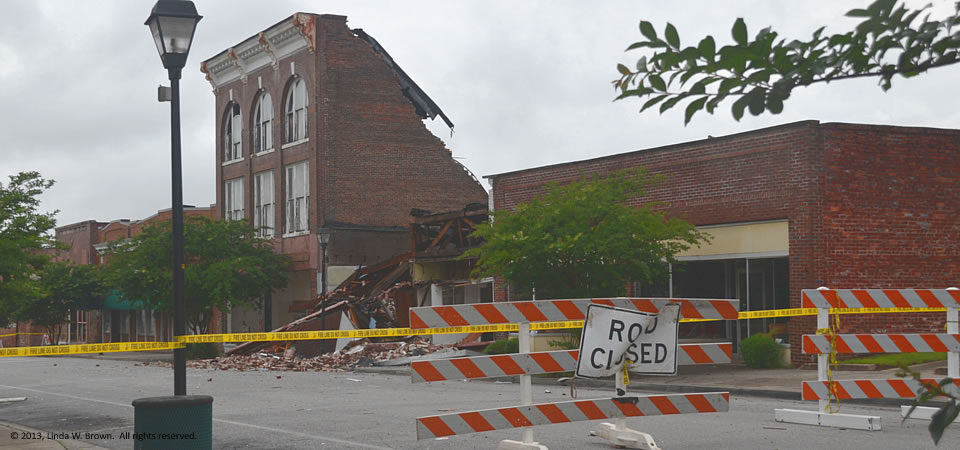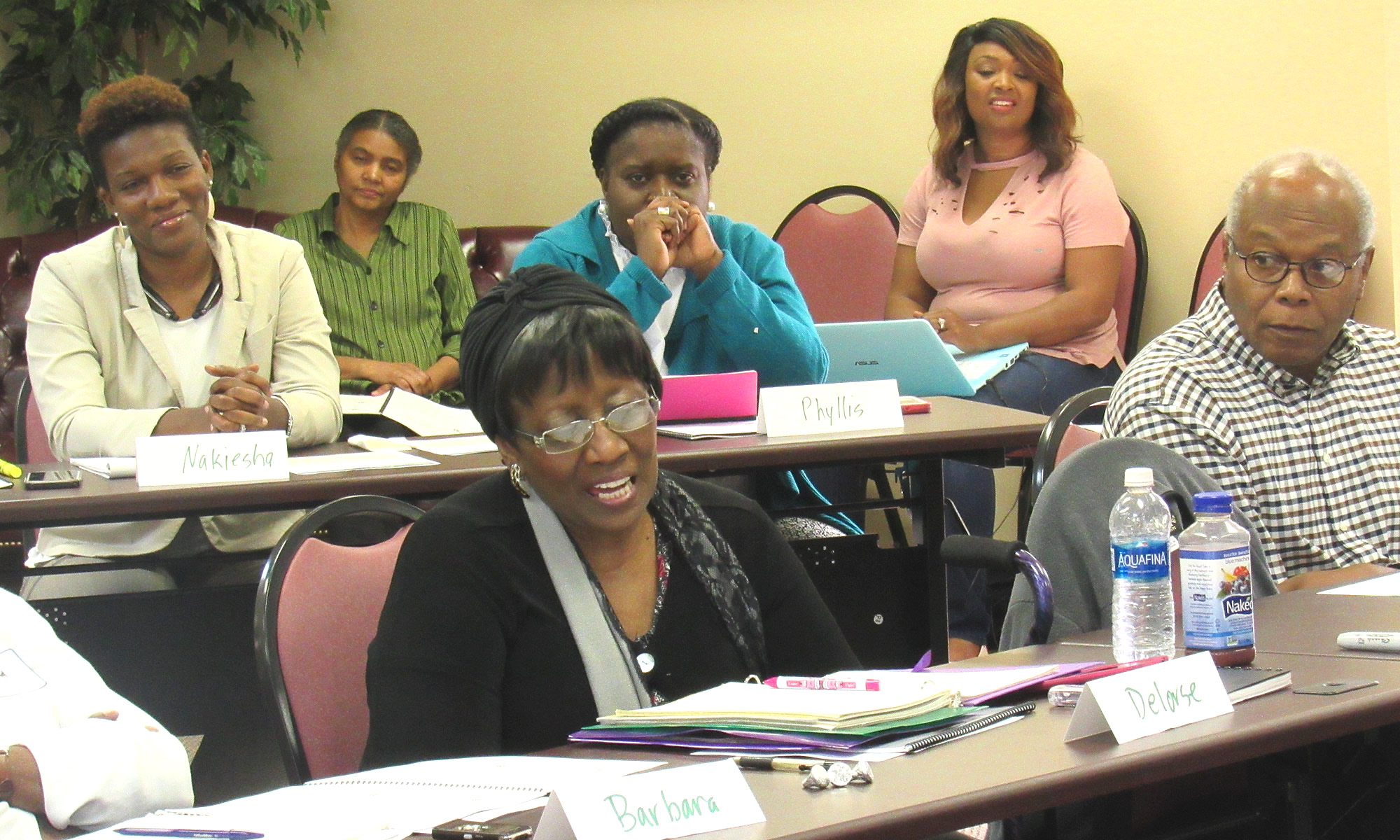
This 1904 brick building on Hampton Avenue in Kingstree, S.C., was being renovated for use by the Williamsburg County Department of Social Services when a nasty storm blew in its unbraced side walls on June 9, retired newspaper editor Linda W. Brown tells us.
“That debris crushed the two small buildings beside it — one of which was used by a tax preparation service; the other was empty. The building adjacent to the smashed buildings belongs to the Williamsburg Historical Society. It, too, was damaged.”
Taking the photo of the damage was tough, Brown said, “because in the past 10 years, we have lost five buildings on that block to fire and two other buildings have collapsed. None of those buildings has been replaced.”
When the three-story structure that suffered damage was built 109 years ago, it was the Kingstree Hardware Company.
“The hardware store was on the first floor and there was a funeral home in one of the upper stories. The building later housed department stores, but had been vacant for a number of years. It is one of 48 properties on the National Historic Register as part of the Kingstree Historic District.” Despite damage, renovations are expected to continue.
Rural Southern communities face major challenges in finding money to preserve significant old structures that can boost their attractiveness to tourists and smaller companies that want to relocate in an historic setting.
Williamsburg County, located in the middle of the Southern Crescent, is about 75 miles north of Charleston, S.C. Just under 34,000 people live in the county, which is about the number who lived there around the time that the Hampton Avenue building was constructed, according to Census figures. Population peaked in 1950 at 43,807, but has dropped slowly since then.
About two-thirds of county residents are black, with almost all of those remaining being white. Only 2 percent of those in the county are of Hispanic descent. Some 32.8 percent of residents live in poverty, according to the Census. Of the county’s 1,921 firms, 36.5 percent are black-owned — a percentage that is three times South Carolina’s average.
Copyrighted photo by Linda W. Brown, courtesy of the photographer. All rights reserved.

